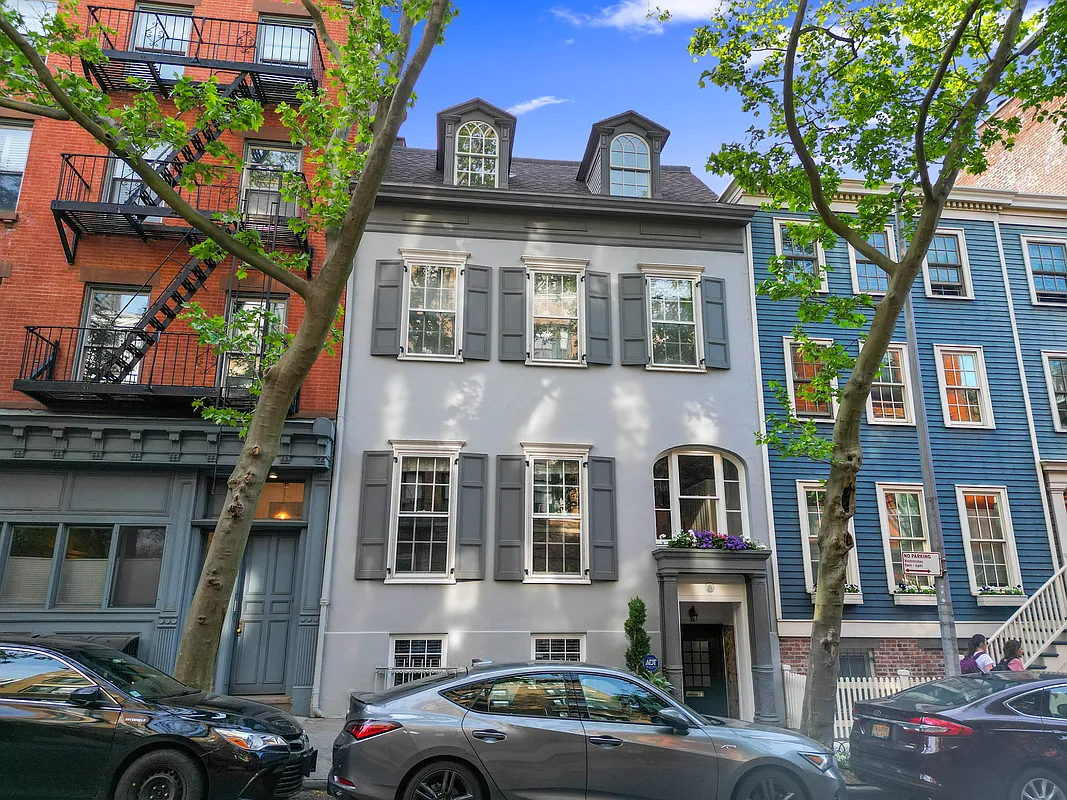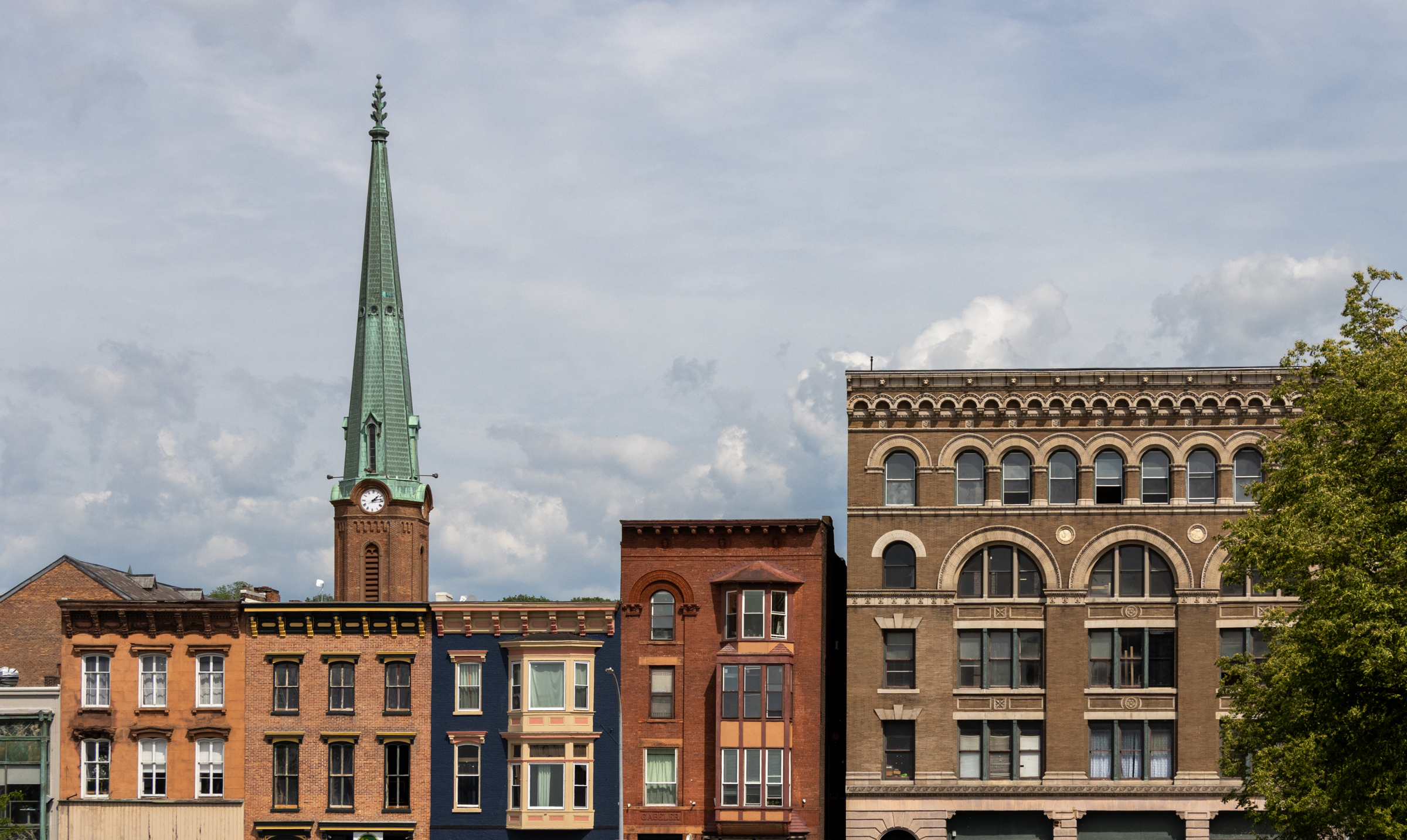Guard Starts Talks 'To Come Up With Alternatives' For Row
The Army National Guard held its first consulting meeting yesterday on the transfer of the Admiral’s Row houses to the Brooklyn Navy Yard Development Corporation. National Guard spokesman Rick Breitenfeldt said more than 30 groups were represented. “We have groups that want to save the buildings and we have groups that want to demolish the…


The Army National Guard held its first consulting meeting yesterday on the transfer of the Admiral’s Row houses to the Brooklyn Navy Yard Development Corporation. National Guard spokesman Rick Breitenfeldt said more than 30 groups were represented. “We have groups that want to save the buildings and we have groups that want to demolish the buildings and build a supermarket,” he said. Four or five meetings are expected to follow “to really come up with a list of alternatives … like things that can be done with the property.” He declined to elaborate on each group’s stance, but said, unsurprisingly, “I did hear in the meeting from a lot of city [officials] that, ‘If we’re required to restore and fix up these buildings, the city isn’t prepared to put any money behind doing that, nor is the State of New York … so please look at funding it through private sources.” The city expected to obtain the properties under a previous agreement that allowed them to tear the homes down. A parking lot and light industrial space is also planned.
But alas, it looks like the National Guard’s sentiments have a decent chance of changing since that 1996 agreement. They released a report last year estimating the 10 quarters, some more dilapidated than others, could be restored for (an amended) $19.6 million or rebuilt for $24.9 million, acknowledging those estimates still assumed the buildings would be reused as homes, and excluded the cost of abatement and conversion to commercial use. The long report—now available on the National Guard’s new Admiral’s Row website—determined the quarters retained enough structural integrity to make them eligible for the state and national registers of historic places. The state’s preservation specialist issued a letter of concurrence; that the old agreement fails to address the new findings, basically rendering it moot. “We hope that appropriate alternatives will be considered including adaptive reuse and rehabilitation of the historic building and the site (including walls, fences and landscape features). We are not opposed to the redevelopment of the site,” it read, “but it is critical that the alternatives analysis seriously consider how these nationally significant buildings can be creatively incorporated into the overall plan.” Conveniently, nearby Pratt architecture students came up with just that. Some have suggested Fairway Market in Red Hook, which occupies the ground floor of a large old industrial building, is proof that these homes could also be refashioned into a market. Navy Yard Development Corporation president Andrew Kimball has said he’d like to bring something like Fairway to this supermarket-starved end of town—in the ground floor of a new industrial building—but he’s not willing to budget stringing together a bunch of loose, dilapidated houses. As a side note, the quaint six-acre property also has tennis courts and a tennis house with rules still posted, a park, and a timber shed.
As the cliche goes, beauty (and worth) is in the eye of the beholder. So, here’s one particularly amazing photo set to judge for yourself.
Admiral’s Row website [National Guard]
Pratt Professors Seek To Reconcile Competing Plans for Admiral’s Row [Brooklyn Eagle]
Officers’ Row Supermarket Not Happening Anytime Soon [Brownstoner]
Admiral’s Row fixup to cost $20M [Daily News]
Photo by incandenza.





Amen Sam.
There is plenty of space, for example, the tennis court and the space between it and Quarters J (which is not mentioned in the Beardsley / Crawford & Stearns report due to the fact that it is nonhistoric and mostly collapsed) for a very large supermarket – much larger than a Met Foods or a Key.
The National Guard should be evaluating all options, including giving the entire parcel to a private entity who will agree to preserve the residences. The wanton destruction of the AR houses by the BNYDC without any nod to history is absurd.
Are we talking supemarket or mega-supermarket? While the area could certainly use a nice new city-style supermarket, what is being proposed is the grossest sort of suburban mini-mall with a gigantic big-box store on one side and smaller retail on the other with an on-grade parking lot in the center. I think the folks at the Navy Yard, used to driving to work and living in their fenced-in bubble, have NO IDEA IN HEAVEN what urban architecture looks like. The proposal is preposterous, completely suburban and ill-designed in every way.
The Army National Guard should do itself a favor and hire a competent architect to do a thoughtful scheme and then market the site broadly, not just to the City, who could care less. So far this project has been nothing but a giant government bungle. There is time to salvage it if the players think out of the “big box” a bit.
Fairway is cheaper than the typical supermarket (and way cheaper than bodegas and corner markets) and they sell everything — gourmet food along with the typical stuff. People “in the PJs” would probably appreciate that just as much as people in Dumbo tired of the Peas & Pickles selection. Fairway is the best supermarket in Brooklyn.
Also, I don’t think people in the PJs are looking for a Fairway when they say supermarket.
I think the buildings are beautiful, though, and should be saved.
Brownstoner: Congrats! Although you’ve made it clear in the past where your sympathies lie in this debate, I have to say that this is one of the most even-handed presentations of the issue I’ve seen in the media or on Blogs. I figure that I always criticize you when your presentations are skewed, so I should give you kudos when they are “fair and balanced”. I was especially glad to see that someone finally mentioned that the cost estimates for rebuilding the houses assumed that they were rebuilt for residential use and that the cost to rebuild them for commercial or public use would be significantly more. My only real comment is that the Fairway in Redhook argument is clearly not a good example. Although both buildings may be from the same era, there is clearly a difference between putting a supermarket into a large warehouse structure and stringing together a series of houses. Also the Fairway building was in significantly better condition than these houses.
-Ella
Those are beautiful photos and it would be great to revision and build with that energy in mind. Not sure what the above poster is pointing to; however, the above article had too many long and unclear sentences.
oh jeez, use spellcheck already